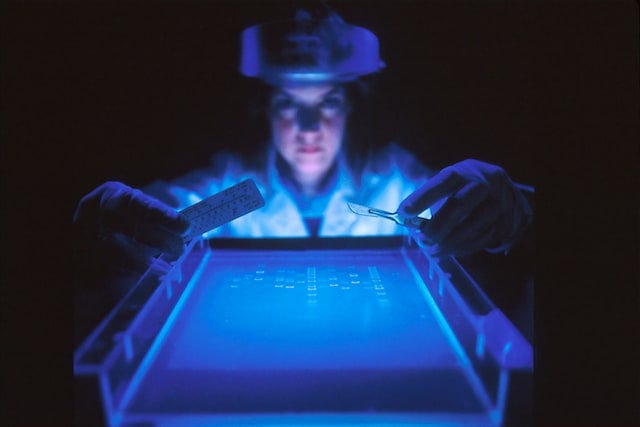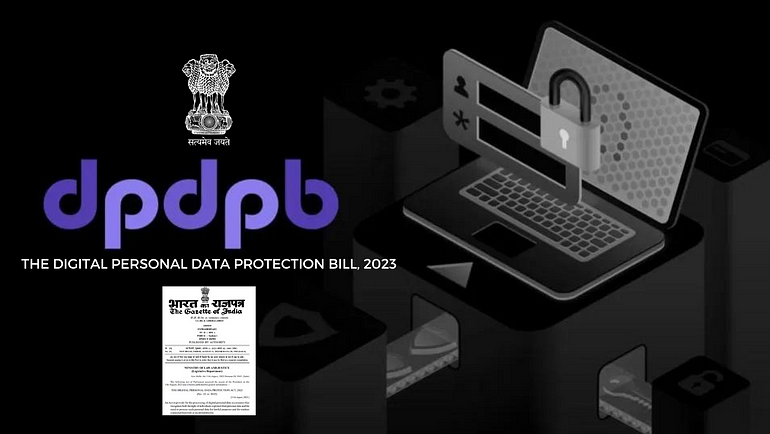Tips you should know for a successful Hospital Information System implementation
Introduction
Setting up and deploying a HIS system in a hospital is more than just configuring the HIS software. HIS delivery requires a holistic approach and must be coordinated with other operational processes and flow within the hospital.
Implementing health information systems is often challenging and requires complex strategic planning with the systematic organizational changes associated with such programs.
This article highlights some of the key issues that must be addressed consistently to successfully implement a Hospital Information System (HIS) in a hospital.
Three pillars of a hospital information system implementation

These are three pillars to the successful implementation of a hospital information system
- People
- Process
- Technology
When implementing HIS in a hospital, it is imperative that the process is up and running and adapted to the new workforce and processes as needed. If you try to be 100% correct, you may spend too much time on paper analysis and not enough time to drive HIS implementation. It also slows hospital acceptance, increases costs, and negatively affects corporate image. It’s important to set aside investment and planning to refine your approach and deal with minor issues that arise after you go live.
People
Hospital staff form the foundation of a functioning hospital. Hospital staff have extensive experience in performing their duties. They may have experience with a fully manual operational process that uses physical files and paper for records. Also they physically move those files from one department to another.
Others may have experience with fully computerized operational processes where information flow is electronic and no physical file movement is required. Others may be experiencing a combination of both
These different experiences will have a significant impact on your HIS deployment. One user’s expectations may differ from another, resulting in the HIS system’s approval or rejection. Change management is therefore an important aspect of people management.
The project sponsor and project committee must have executive authority to complete the project. A steering committee ensures the progress of the HIS project. Make decisions related to out-of-scope items, process changes, and workarounds as part of the overall goal of keeping the system running smoothly.
All stakeholders should understand and accept the scope of the HIS implementation, work towards their goals within that scope, and eliminate unnecessary changes that only increase the cost and duration of the HIS implementation.
If manual and out-of-band processes need to be institutionalized, process changes may be required. These process changes should be documented early and communicated to all users.Pre and post Live Support Reduces User`s fear and removes uncertainty.
Regular communication from hospital management and his HIS sponsors helps ensure implementation of HIS and realize progress.
Addresses user expectations that the new HIS system is not identical to other software. This means that the new HIS system works and is expected to behave differently. Users should not expect new HIS to look like the system they were using before. Setting this expectation will help users accept the new HIS system.
Identifying Key Users
Some key users such as the HIS Sponsor, Inventory, Billing, and Financial Accounting key users are essential to begin the HIS implementation process.
Key users require expertise. The key user for inventory is responsible for determining the supplier of the hospital’s inventory (medicine and supplies), costs to the hospital, pricing, reorder quantities, and the internal ordering process (establishing main and sub-warehouses within the hospital) .
Employee Hiring Plans
If the hospital is required to increase the manpower ,the timing of hiring all other employees should be well planned in advance.HIS training for all staff should be planned in accordance with the recruitment plan to ensure ongoing training of new staff to prepare them for hospital operations.
Providing Training
A pre-planned training plan should be published to users to overcome fears and concerns about their ability to properly use the HIS in their daily work.
HIS training consists of two main parts
Functional training:- It is designed to help key and general users acquire the knowledge and skills necessary to work with her HIS.
System training:- System Training or IT training is for the IT staff at the hospital. This training typically includes imparting the knowledge and skills to use HIS software, as well as transferring master data if changes are required.
Dealing with Change Management
Introducing new systems is frustrating because users have different experiences and backgrounds. Good change management identifies concerns, fears and biases, addresses them directly through training, and presents clear benefits and obligations for hospitals to adopt the system.
Steering Committee Role
The Steering Committee meets regularly. It also recommends a steering committee meeting should be held every two weeks at the beginning and end of HIS implementation.
The Project Manager will provide updates on the progress of the HIS implementation, the achievements of the past two weeks, the activities and deliverables scheduled for the next two weeks, and the project team should pay attention to the Steering Committee.
With clear goals and an understanding of the project scope, the Steering committee can clarify and eliminate unnecessary scope crawls and requests and direct further action, which may take the form of workarounds or out-of-band processes. The Steering committee is responsible for obtaining all necessary approvals promptly, addressing change management, and continuously tracking the timeliness of critical deliverables.
Process

Setting a clear and defined scope at the beginning of your HIS implementation will lead to a smoother implementation. Goals and scope form the basis of the HIS system and hospital operations. The user can also specify which out-of-band process to use. Starting the implementation with a clear and solid platform reduces the risk of system delays and rejections and gives the Steering Committee confidence in his HIS implementation decisions.
HIS work flow
Application Experts must have a thorough understanding of HIS operating flow. Key users are responsible for communicating this knowledge to their employees and establishing other out-of-band processes required for specific operations. Because key users also act as agents of change, their knowledge of operational processes increases employee confidence in using HIS systems.
Creating Master Data
Application specialists are responsible for determining the required master data. Master data is the heart of the HIS system. It defines what the system does and how it works. A master data template is provided in a Microsoft Excel spreadsheet. Key users enter master data in templates. Examples of master data are drug master data, service master data, tariff master data, insurance master data, etc.
Data Migration
If you need to transfer the old system data to a new HIS system you need to consider the data migration strategy. Data migration is a time consuming task which needs the expertise hands. You need to consider this in your project planning to allocate appropriate time based on the volume of data.
Use HIS team`s expertise to migrate, cleanse, and transform the data. Strategies has to be planned in advance for migrating from existing systems to the proposed HIS solution. You need to consider below steps while planning the migration strategy.
- Examine existing databases and software.
- Identify data to port to the HIS solution
- Prioritize modules for transfer to the HIS solution
- Map existing data to fields and tables in the HIS solution
- Create a plan for moving data from existing systems to the HIS system and porting as needed
- Build Utilities
- Test
- Run old and new systems side-by-side to fix issues.
Interfaces to External Systems

The interface approach is intended to facilitate flexible and adaptable methods of integration with external components. Several approaches are used:
Using intermediate media known as staging tables.
This method extracts data from HIS and inserts it into staging tables. The staging table format is defined after consultation with the hospital’s external component supplier and consists of the fields required by the external component supplier.
HIS can consume (use) coarse-grained web services or remote APIs.
These web services are intended to be coarse-grained so that all functionality can be performed with a single web service call. Web services can use other fine-grained APIs to achieve their goals This is transparent to HIS. This approach is more adaptable because HIS only needs to call coarse-grained web services.
A message format standard such as HL7
HL7 is used whenever possible. There are new versions like FHIR also can be used if possible. Hospitals should ensure a test environment for interface testing. After going live, there is no way to test the interface without an interface test environment.
Configuring User Roles/Tasks/Permissions
The primary IT user should define user roles, tasks, and the permissions granted to those users. This important configuration determines the role-based access control mechanism within the HIS system so that logs are not compromised between employees from different departments performing unauthorized tasks.
Depending on the size of the hospital, this will be an ongoing activity as new staff are recruited. Defining roles, tasks, and permissions requires a thorough thought process to create role-based access controls and not throttle the system by unduly preventing users from performing their functions.
Functional Testing , User acceptance & sign off
Test After the master data has been loaded into the HIS system, functional tests can be performed for users or key users. During operational testing, multiple computers were placed in the room, each playing the role of a hospital user. Target groups are typically receptionists, outpatients, billers, pharmacies, kiosks, nurses stations, inpatients, and emergency physicians.
Operational testing mimics several hospital operational scenarios including:
Outpatient care, ER, admission/management/discharge of inpatients, pharmaceutical affairs, post office box/GRN/return storage/billing. These testing processes will test master data and validate system behavior in production scenarios, with the goal of increasing user confidence.
Preparing for Go-Live
In addition to the master data, some planning areas need to be completed before the HIS can be started.
Master Data Cleanup
Master data must be re-imported into HIS before going live. This is to ensure that the database is “clean” before starting HIS.
Contingency Plans
Hospitals must have contingency plans. For example, do you have an operating manual in case the HIS system becomes unusable due to a widespread power or network/system outage?
Site and network test
You should log into the system and test. This test verifies that the network is working and the PC can communicate effectively with her HIS system.
Device Configuration (Barcode Printer, Printer)
The Barcode Printer, Label Printer, and Generic Printer must be configured on each PC by the hospital’s IT team. A user logs into the HIS system and performs a test print from the HIS to confirm there are no printing issues.
Final Interface testing & preparation
Interface testing with HIS is necessary to ensure that there are no connectivity issues with external components of the live system.
Go Live Support planning
A go-live support plan that includes a list of staff to support operations for at least one week after go-live should be published for access by all users.
We need to create a roster in preparation for the HIS implementation. The service list includes the names and locations of these support agents. Support staff are available to answer questions from HIS users, clarify questions, and resolve configuration issues.
The number of assistants depends on the number of floors, number of nursing stations, number of medical stations, and number of locations. It doesn’t matter how many beds you have. You have a functioning control center with reported critical issues that require immediate remediation.It is recommended to temporarily increase the manpower in the functioning control center exclusively to answer and handle the calls from end users in regards to HIS issues .
Technology

Hospital’s IT team is responsible for designing and implementing the technology infrastructure required for the HIS application and its related components. There are multiple hosting options available with different infrastructure approaches. You can refer my another article on private and public cloud infrastructure for health care application for further details
Infrastructure Setup
Infrastructure setup includes networking, IP address assignment, PC configuration, PC provisioning, and server room availability for host servers. The IT team installs application servers and database servers. The IT team should determine the need for high availability. High availability can be achieved through hardware or software clustering.
The IT team should design a backup and restore process. Disaster recovery can be part of high availability design and implementation. Business continuity can be done manually until the system is back online. The need for these processes may be gradual.
Getting on track
Appropriate monitoring and evaluation work has to be carried out to assess how the new system is being used in addition to addressing ongoing issues. This also requires an assessment of the HIS work flow with hospital operations and its added values.
CONCLUSIONS
Successful implementation of critical health information technology requires careful planning and continuous critical evaluation of progress. We hope that by considering the implementation lifecycle of technology systems, organizations can avoid common pitfalls and increase their chances of successful implementation and adoption , however, that the steps and considerations described here are linear and may overlap.


Author –Ragesh R
IT professional specialized in healthcare technologies with over two decades of experience. He also has a fondness for photography, traveling, designing, painting, and sharing knowledge.





